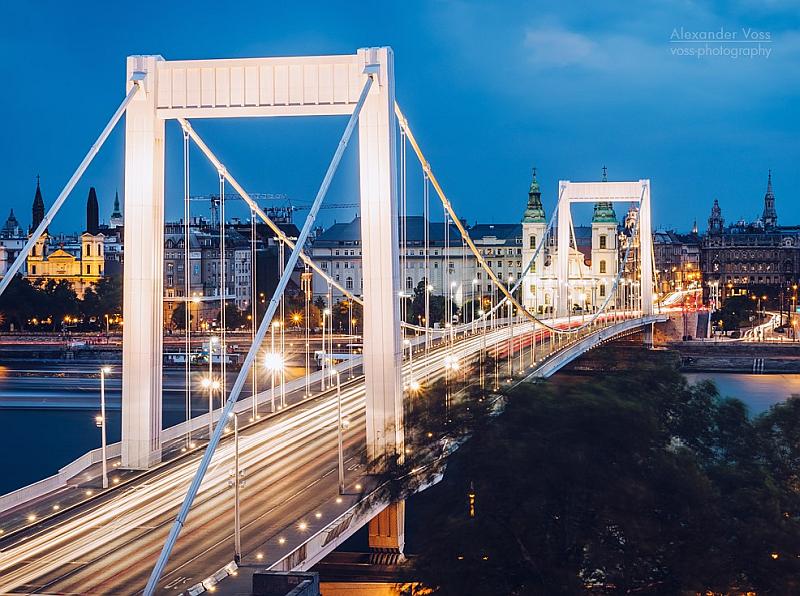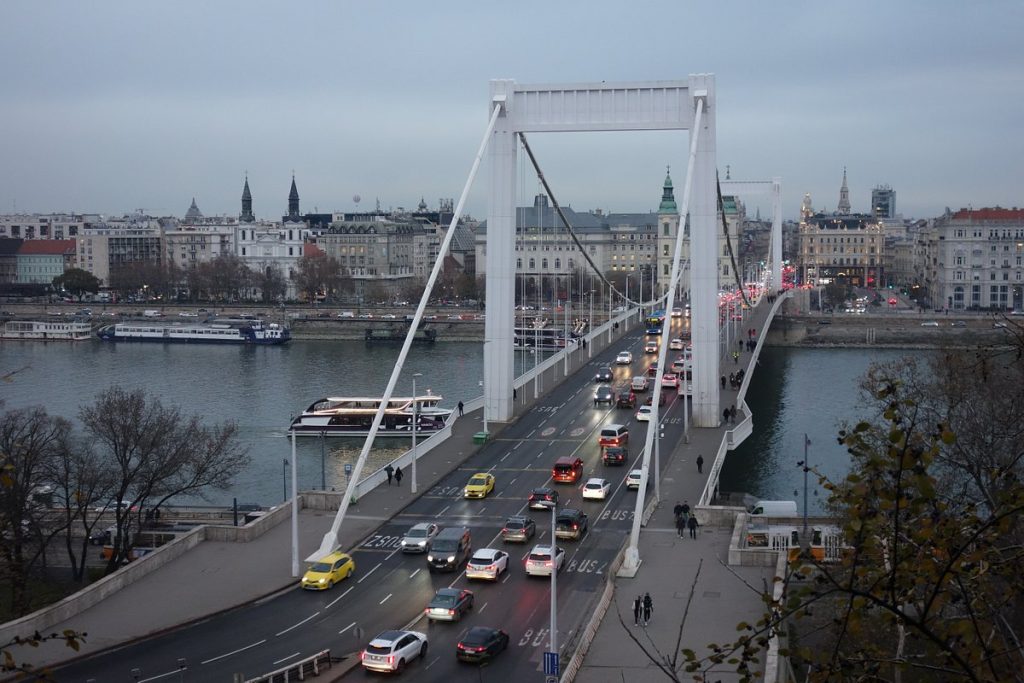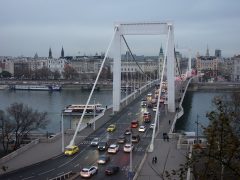Elizabeth Bridge: A Symbol of Budapest’s Resilience and Architectural Evolution
The Elizabeth Bridge in Budapest is not merely a structure spanning the Danube; it’s a vivid testament to the city’s resilience, architectural innovation, and historical evolution. As an expert in Budapest’s landmarks and history, I’m here to guide you through the remarkable journey of the Elizabeth Bridge, from its inception to its present-day grandeur.
A Bridge Born from Necessity and Vision
The Elizabeth Bridge’s story begins in the late 19th century when the need for a permanent crossing over the Danube’s narrowest section became apparent. Antal Pálóczi’s initial proposal in 1885 set the stage for what would become an iconic structure in the heart of Budapest.
Designing a World Record-Holder
Originally designed by Julius Kübler, the bridge transformed significantly to embody Hungarian pride and practicality. The result was a unique chain bridge unveiled in 1903, holding the world record for the largest chain bridge span until 1926. The bridge’s 290-meter span and impressive length of 378.6 meters were engineering marvels of their time.
The Scars of War and Resurrection
The original bridge did not survive the turmoil of WWII. In 1945, retreating German forces destroyed the bridge, leaving a lasting impact on Budapest’s cityscape. However, the post-war era marked the beginning of the bridge’s rebirth. A completely new design was envisioned by Pál Sávoly, leading to the construction of a modern, six-lane cable-stayed bridge in 1964.
Embracing Modernization
The Elizabeth Bridge has continuously evolved to meet the demands of modern Budapest. The addition of decorative lighting in 2009 and ongoing urban development projects have infused the bridge with contemporary elements, enhancing its aesthetic appeal and functionality.
A Modern Day Icon
Today, the Elizabeth Bridge is more than a means to cross the Danube; it is a beacon of Budapest’s enduring spirit. It’s a symbol of the city’s ability to rebuild and innovate, reflecting its dynamic history and modern pulse.
A Must-Visit Landmark
For visitors to Budapest, the Elizabeth Bridge offers a route across the river and a journey through time. Its transformation from a world-record-holding chain bridge to a modern cable-stayed bridge is a narrative of resilience and architectural ingenuity.
Did you know about the Elizabeth Bridge?
The Elizabeth Bridge (Erzsébet híd in Hungarian) in Budapest is a prominent modern structure with unique stories and characteristics. Here are some key facts about this bridge:
- Historical Background: The original Elizabeth Bridge, named after Queen Elizabeth, the wife of Emperor Franz Joseph and widely known as Sisi, was built between 1897 and 1903. However, it was destroyed during World War II.
- Modern Reconstruction: The current bridge, unlike its predecessors, is a sleek, white, cable-stayed bridge. It was rebuilt and opened in 1964 and starkly contrasts the other, more historical bridges in Budapest.
- Design and Structure: The modern Elizabeth Bridge was designed by Pál Sávoly. It is notable for its slender and elegant design, making it a unique feature in Budapest’s cityscape. With a length of 290 meters (951 feet) and a width of 27.1 meters (89 feet), it is one of the longest bridges spanning the Danube in Budapest.
- Location and Importance: The bridge connects Buda and Pest, specifically linking the Gellért Hill area with the city center. This makes it a vital transportation route for both vehicles and pedestrians.
- Architectural Significance: Elizabeth Bridge is an example of modern bridge architecture and is often admired for its minimalistic and elegant design. It’s a striking example of mid-20th-century engineering and design.
- Cultural Impact: The bridge holds a significant place in the hearts of Budapest’s residents. Its modern design symbolizes the city’s recovery and regeneration following the destruction of World War II.
- Tourist Attraction: The bridge is a favorite spot for photographers and tourists. With its sleek design and stunning night-time illumination, it offers picturesque views of the Danube and the city’s skyline.
- Maintenance and Preservation: Due to its importance and constant use, the bridge undergoes regular maintenance to ensure its safety and longevity. This maintenance ensures the bridge remains a safe and beautiful part of Budapest’s infrastructure.
With its modern design and significant role in connecting the city, the Elizabeth Bridge stands as a symbol of Budapest’s resilience and contemporary architectural achievement.
In conclusion, the Elizabeth Bridge is integral to Budapest’s identity, a structure that embodies the city’s past struggles and triumphant resurgence. As you cross this iconic bridge, you’re not just traversing the Danube; you’re experiencing a piece of Budapest’s rich history and its steadfast commitment to progress and innovation. The Elizabeth Bridge is a must-see for anyone seeking to understand the heart and soul of this vibrant city.




